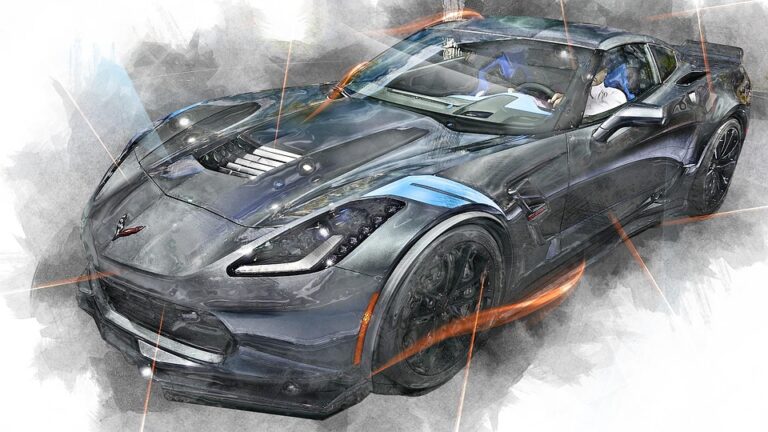Aerodynamics and Performance: How Design Impacts Speed
Meta Description: Discover how aerodynamics influence performance cars’ speed and efficiency. Explore design elements that enhance vehicle dynamics.
Introduction
When it comes to performance cars, speed often takes center stage. However, what’s less obvious but equally crucial is the role of aerodynamics in achieving that speed. The fine-tuning of design elements—not just horsepower or engine specifications—decides how swiftly a car can cut through the air. In this article, we’ll delve into how aerodynamic design impacts the performance of vehicles, and what features contribute to enhancing speed and efficiency.
Understanding Aerodynamics in Performance Cars
What is Aerodynamics?
Aerodynamics refers to the way air interacts with moving objects. In the context of cars, it encompasses the study of how air flows around the vehicle. The main objective of optimizing aerodynamics is to reduce drag and increase downforce, enabling cars to gain speed and stability.
The Importance of Aerodynamics in Automotive Design
-
Drag Coefficient (Cd): A crucial metric in measuring how much resistance a vehicle encounters while moving through air. Lowering the drag coefficient enhances speed and fuel efficiency. High-performance vehicles aim for a Cd of less than 0.30.
- Downforce: This is the downward pressure created on the vehicle due to airflow, essential for maintaining traction at high speeds. Performance cars utilize various design elements to maximize downforce without significantly increasing drag.
By balancing drag and downforce, manufacturers can ensure that performance cars not only accelerate faster but also handle well at high speeds.
Key Design Elements that Influence Aerodynamics
Body Shape and Contours
The car’s shape—its length, width, and height—plays a significant role in aerodynamics. Sleek, elongated designs allow for smoother airflow, minimizing turbulence. Here are some crucial body shape considerations:
- Nose Design: A pointed, smooth nose reduces air resistance.
- Roofline: A sloping roof can help air flow more efficiently, minimizing drag.
- Rear Design: A tapered rear section enhances airflow separation, reducing wake turbulence.
Front Grille and Air Intakes
The placement and shape of the front grille and intakes also impact aerodynamics. While these features need to channel cooling air to the engine and brakes, they should be designed to minimize drag as well. Performance cars often incorporate:
- Active Grilles: These open and close based on engine cooling needs, optimizing airflow without unnecessary drag.
- Air Ducts: Well-designed ducting directs air movements, aiding in balance and cooling.
Wing and Spoilers
Wings and spoilers are not just for aesthetics; they play an essential role in managing airflow.
- Front Splitters: Extend from the bumper to channel air effectively, increasing downforce by decelerating the airflow underneath the car.
- Rear Spoilers/Wings: By generating downforce, they improve traction and stability during high-speed maneuvers.
Underbody Design
A vehicle’s underbody often features intricate design adaptations to enhance aerodynamics:
- Flat Floors: Smooth undercarriages reduce drag by creating a cleaner airflow.
- Venturi Tunnels: Often found in supercars, these tunnels accelerate airflow beneath the vehicle, creating a low-pressure zone that enhances downforce.
Real-World Examples of Aerodynamic Performance Cars
Performance cars like the Tesla Model S Plaid and the Porsche 911 GT3 showcase advanced aerodynamic engineering.
-
Tesla Model S Plaid: Boasting a drag coefficient of 0.208, its sleek design is not just visually appealing but also maximizes efficiency, allowing remarkable acceleration.
- Porsche 911 GT3: Known for its aggression in aesthetics, it’s designed to produce significant downforce through its active rear wing and front diffuser, making it a track-ready beast.
Benefits of Aerodynamic Design in Performance Cars
Enhanced Speed and Efficiency
By minimizing drag and maximizing downforce, performance cars can achieve higher speeds more efficiently. Better aerodynamics translates to improved fuel efficiency and extended range, critical in the age of performance-oriented electric vehicles.
Improved Stability
Aerodynamic designs provide better handling and control, especially at high speeds. Reduced lift ensures that the car remains glued to the track, providing drivers the confidence to take corners at speed without losing grip.
Reduced Noise and Vibration
Well-designed aerodynamics can also cut down on wind noise and vibrations experienced in the cabin, leading to a more enjoyable driving experience.
Conclusion
The impact of aerodynamics on performance cars cannot be overstated. As designers and engineers continue to innovate, each element of car design—from its shape to the smallest aerodynamic aids—plays a vital role in a car’s speed, efficiency, and overall performance. Thankfully, enthusiasts today can appreciate the blend of art and science that allows such advanced vehicles to exist. By understanding these elements, consumers can make informed choices about performance vehicles that will not only satisfy their speed cravings but also exhibit cutting-edge design.
Explore more about how design affects not only the performance but also the aesthetic appeal of your favorite cars at buzzo.live.


